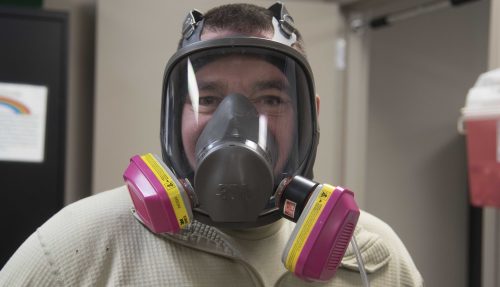
October 17, 2017
Respiratory Protection Selection Made Easy (Or At Least, Less Confusing)


October 17, 2017

With so many respirators in use and readily available for purchase through both online merchandisers and at neighborhood hardware stores, it’s important to remember that when it comes to choosing respiratory protection, there’s not a one-size-fits-all solution.
An estimated 5 million workers are required to wear respirators in 1.3 million workplaces throughout the United States, according to OSHA¹. Knowing what the agency requires for respirator use in the workplace, as well as having a thorough understanding of both the application and contaminants present are critical to the respiratory protection selection process.
In addition, having an understanding of the information that’s needed and its importance will ensure the safety of the respirator user while expediting the selection experience. Knowing where to turn for help can make the selection process less daunting for safety professionals faced with respiratory protection options.
Before an EHS professional starts down the path of purchasing respirators, an understanding of OSHA’s hierarchy of hazard control measures is in order. From the agency’s perspective, personal protective equipment (PPE) is the last option for an employer seeking to prevent employee exposure to a contaminant. OSHA’s hierarchy of control measures, in order, is:
• Elimination/substitution • Engineering controls • Administrative and work practice controls • PPE
When it comes to respiratory hazards, elimination/substitution means phasing out the contaminant or substituting a non-hazardous material for the contaminant causing the concern. Examples of engineering controls include the isolation or dilution of the contaminant through the use of a fume hood or ventilation.
Administrative and work practice controls could encompass rotating multiple workers through a job where contaminants are present to reduce individual exposure levels.
A respirator only becomes an option if the preceding control methods are infeasible or if they fail to reduce exposures to acceptable levels. Respirators also could be used in the interim while the other control measures are being implemented.
Read more at EHSToday.com